Mountain home designers and emergency power generation in bad weather.
It starts when you see little snowflakes falling around you when you’re outside walking your dog. Hmmm. Nothing much; just a little snow. If you happen to be mountain home designers, about an hour later, when you look out your windows and see that the snow is still falling, you begin to wonder. Wonder if perhaps this might be a couple of inches of snow this time. 3 to 4 to 6 hours later, you know you’ve had about a foot of snow and you’ve seen the lights in your home flicker off and on and then you know there’s going to be some trouble.
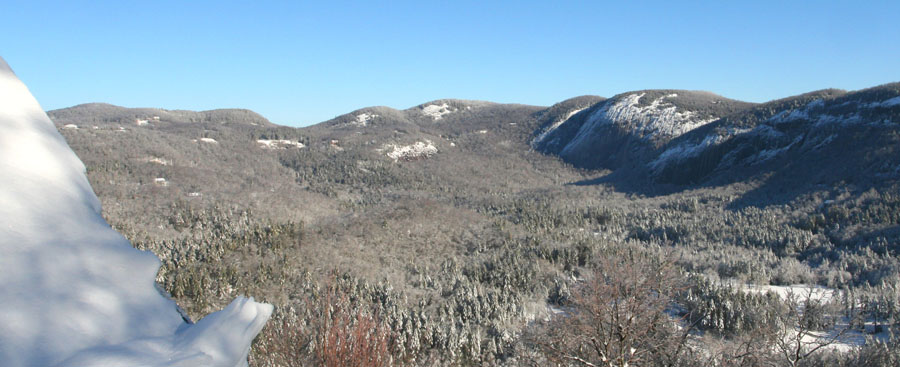
Mountain home designers have to think about such things. Like what do mountain home clients do when this happens? Then the lights go out and everything goes black. And still the snow falls. Now what? How will you and your family and the little dog you were walking when this began stay warm? Cook food? Have water? Commercial electricity from the local power plant has gone down. Lines are probably down. Power will likely remain off from them for hours or even days.
How mountain home designers can prevent disaster.
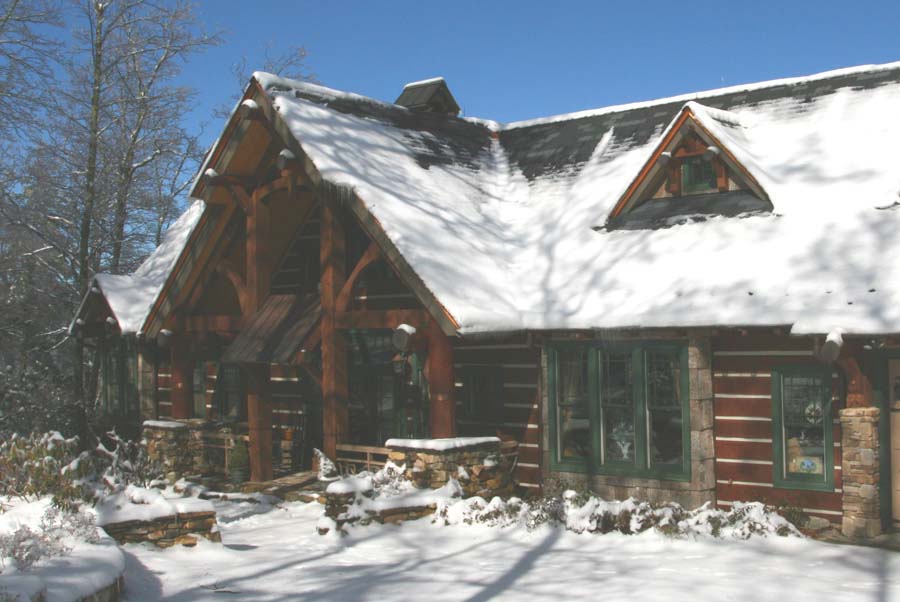
Doubts and fears built quickly…then suddenly something amazing happens. The lights come back on! How? Mountain home designers should always recommend to their clients that they have an emergency electrical power generator as part of their dream home project. Clients may say: “that’s nothing I need to worry about.” Yes it is. Mountain home designers should suggest this seriously. The above circumstance can and will happen to everyone who lives in the mountains, or even in any ordinary house, anywhere. But the likilhood of losing power for an extended length of time in the mountains will happen. We have seen it happen for as long as 4 days in the Blue Ridge Mountains, after the tail end of a hurricane blew through here several years ago. What can cause commercial power outages? High winds. Torrential rains. Lots of snow. Any of these , or a combination of them.
Generator cost and mountain home designers.
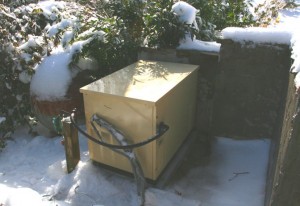
The cost? Perhaps $8,000 to $35,000 or more, depending on the KW size of the generator and the emergency load for the house that the mountain home designers have created. Once the decision is made to have a generator on the part of the homeowner, there is one more important choice: a larger generator to handle the total power load of the home, or a smaller generator to handle a smaller, emergency load. Personally, Rand Soellner Architect suggests upgrading to the larger generator to handle the total load. Why? The added cost is not much for a larger generator. The convenience in being able to have everything running during harsh circumstances far outweighs any minor savings in have a smaller generator. Also, there will be a significant increase in cost of having to engage an electrician to provide and wire an emergency power panel if all of the home’s power will not be handled on the emergency generator. So, there is an artificial savings in obtaining a smaller generator, due to increased electrician costs. Once again: Rand Soellner Architect’s suggestion: get an emergency power generator to handle the whole load.
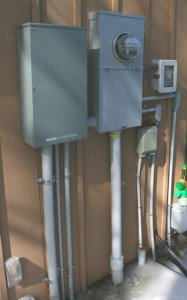
Rand Soellner home architects recommend that their clients have an ATS (Automatic Transfer Switch), which is on the left of the this photo, to the side of the main entry power disconnect beside the meter base. To the right of the meter base you can see the Whole House Surge Suppressor (small box), which is another feature recommended by Soellner, to help control power surges from damaging the homes created by mountain home designers. All features are specified by Rand Soellner Architect to protect their clients.
Mountain home designers and the aesthetics of hiding your generator.
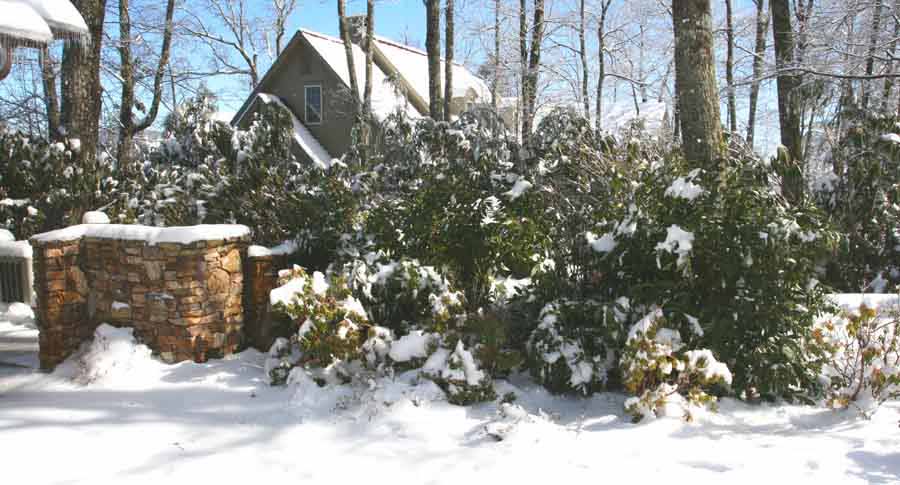
First of all, you ought to seriously consider having an alternative energy source, like LP gas, for some of the major appliances in your home, because this will allow your generator to be sized for a smaller load. Ideally, bury the LP tank, if that is what you have to use. If you cannot bury the tank (or if you cannot obtain underground commercial gas service), you will have to use an above-ground gas tank. The economical way to conceal this big tank (about 4′ in diameter x 10′ long +/-) is to plant some bushes. We prefer boxwoods if you have the proper environment for them. Around the generator, you can plant more landscaping, or if it is near the home, your mountain home designers can detail a nice stone wall like the one shown here.
Mountain home designers have many details to know about and with which they should be familiar. The comfort and perhaps survival of their clients depends on it. The mountains are beautiful; that’s why people want to live here. The rugged territory attracts dramatic climate events, however, and mountain home designers need to prepare their clients for this.
Social media tags: mountain designers,emergency power generators, cashiers nc, highlands nc, lake toxaway, asheville, hendersonville, seneca, franklin, sylva, waynesville, timber frame, post and beam, custom, luxury residential, log, castle, mansion, cottage.
Links and resources:
mountain home architects
home architects

1 Comment
uberVU - social comments
12:56 pm - March 2, 2010Social comments and analytics for this post…
This post was mentioned on Twitter by RandSoellnerArc: Green Home Architects GREENTIPS 2-5-2010 mountain home designers & emergency power https://www.homearchitects.com/mountain-home-designers…